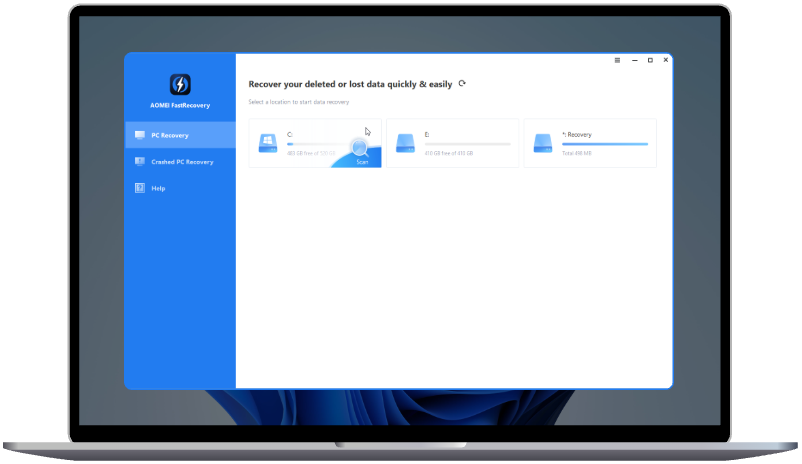How to Install Windows 11 to Unsupported PC
In the realm of modern computing, upgrading to the latest operating system can significantly enhance user experience and security. Windows 11, the newest iteration from Microsoft, promises sleek design upgrades and improved functionality. However, not all older PCs are officially supported for this upgrade out of the box. Fear not! There are ways to bypass this limitation and enjoy Windows 11 on your beloved but unsupported PC.
Understanding the Compatibility Check
Before diving into the installation process, it's crucial to understand why your PC might be labeled as unsupported for Windows 11. Microsoft has set specific hardware requirements, including CPU specifications, Secure Boot capability, TPM version, and more. If your PC falls short in any of these areas, the official Windows 11 installer will likely block the upgrade.
Checking Minimum Requirements
The first step is to confirm whether your PC meets the minimum requirements for Windows 11. Tools like the PC Health Check app from Microsoft can provide insights into what needs upgrading or adjusting.
Exploring Alternative Installation Methods
Method 1: Using the Media Creation Tool
One of the most straightforward methods involves using the Media Creation Tool provided by Microsoft. This tool can create a bootable USB drive or ISO file that bypasses the compatibility check during installation.
Method 2: Enabling TPM and Secure Boot
Windows 11 requires TPM (Trusted Platform Module) 2.0 and Secure Boot for installation. Access your PC's BIOS settings to enable these features if they are not already activated. This step might involve updating your BIOS firmware.
Method 3: Editing the Registry
For advanced users, editing the Windows Registry can sometimes override the compatibility check. This method requires precision and caution, as incorrect registry edits can cause system instability.
Proceeding with Installation
Once you've prepared your system using one of the methods above, proceed with the installation of Windows 11 as you would with any other operating system upgrade. Make sure to back up your important data and settings beforehand to avoid any potential data loss during the installation process.
Post-Installation Considerations
After successfully installing Windows 11 on your unsupported PC, ensure all drivers are updated to their latest versions. This step is crucial for optimal performance and compatibility with new features introduced in Windows 11.
How to install Windows 11 on unsupported PC
While various techniques exist for installing Windows 11 on unsupported hardware, there is a risk of data loss during installation or upgrade. Making changes to system configurations does not guarantee stability and can put your devices at risk. However, there is always another way to accomplish your aim.
Although Windows 11 removes the Win to Go feature, a helpful program can assist you in creating a Windows 11 to Go drive for operating Windows 11 on an incompatible PC.
AOMEI Partition Assistant is a disk and partition manager for Windows 11, 10, 8, 8.1, and 7. It includes a "Windows To Go Creator" function, which allows you to create a portable drive with a Windows OS. After running the disk on the target PC, it will function as a normal system and may be upgraded like any other Windows operating system. This disk allows you to run Windows 11 on any PC, even Mac PC.
The Best Windows Disk Partition Manager and PC Optimizer
Step 1. Connect a USB drive larger than 13GB and download Windows 11 ISO file on your current computer.
Step 2. Install and launch AOMEI Partition Assistant Professional. Then click "Tools" > "Windows To Go Creator".
Step 3. Choose "Create Windows To Go for personal computer" and click "Next". If you want to boot Windows from USB on Mac, just tick the second option.
Step 4. Choose the first option and click the folder icon to select Windows 11 ISO file you downloaded before manually. After that, click "Next" to continue.
Step 5. Select the prepared USB drive as your target drive and click "Proceed".
Step 6. Read the warning about all data will be erased carefully, and then click "Yes" to start creating.
After that, any time when you need to use Windows 11, you can boot the computer from this Windows 11 To Go device.
Conclusion
In conclusion, while Microsoft officially supports specific hardware configurations for Windows 11, there are methods available to install and enjoy the latest operating system on older, unsupported PCs. By following the steps outlined above and understanding the risks involved, you can unlock the full potential of Windows 11 on your existing hardware. Stay informed, backup diligently, and enjoy the enhanced features and security that Windows 11 has to offer.
FAQs About Installing Windows 11 on Unsupported PCs
1. Can I install Windows 11 on any PC?
No, Windows 11 has specific hardware requirements that must be met for the installation to proceed. If your PC does not meet these requirements, you'll need to use alternative methods or upgrade your hardware.
2. Is it safe to use alternative installation methods?
Using alternative methods such as the Media Creation Tool or editing the Registry carries some risks. It's essential to follow instructions carefully and back up your data to avoid potential data loss or system instability.
3. Will installing Windows 11 on an unsupported PC void my warranty?
Installing any operating system not officially supported by your PC's manufacturer can potentially void your warranty. Proceed with caution and consider the implications before proceeding.
4. What should I do if my PC meets some but not all Windows 11 requirements?
If your PC meets most but not all Windows 11 requirements, you may still be able to install and use the operating system with some limitations. Consider upgrading your hardware to fully enjoy all Windows 11 features.
5. Can I revert to my previous operating system if Windows 11 doesn't work on my unsupported PC?
Yes, it's possible to revert to your previous operating system if Windows 11 does not work as expected on your unsupported PC. Ensure you have a backup of your data and a recovery plan in place before attempting the installation.

